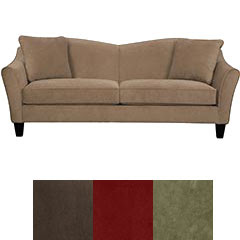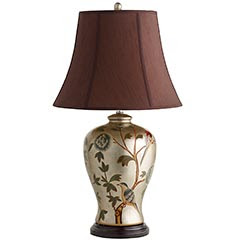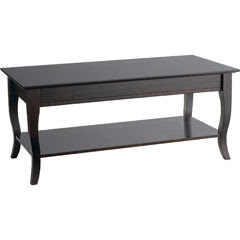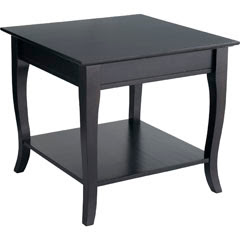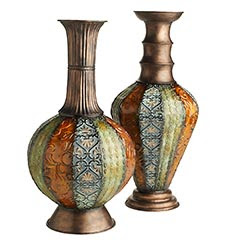Brocade is a class of richly decorative shuttle-woven fabrics, often made in colored silks and with or without gold and silver threads. The name, related to the same root as the word "broccoli", comes from Italian broccato meaning "embossed cloth," originally past participle of the verb broccare "to stud, set with nails," from brocco, "small nail," from Latin broccus, "projecting, pointed."
Brocade is typically woven on a draw loom. It is a supplementary weft technique, that is, the ornamental brocading is produced by a supplementary, non-structural, weft in addition to the standard weft that holds the warp threads together. The purpose of this is to give the appearance that the weave actually was embroidered on.
Ornamental features in brocade are emphasized and wrought as additions to the main fabric, sometimes stiffening it, though more frequently producing on its face the effect of low relief. In some, but not all, brocades, these additions present a distinctive appearance on the back of the material where the supplementary weft or floating threads of the brocaded or broached parts hang in loose groups or are clipped away. When the weft is floating on the back, this is known as a continuous brocade; the supplementary weft runs from selvage to selvage. The yarns are cut away in cutwork and broché. Also, a discontinuous brocade is where the supplementary yam is only woven in the patterned areas.
Tapestry
Tapestry is a form of textile art, woven on a vertical loom. It is composed of two sets of interlaced threads, those running parallel to the length (called the warp) and those parallel to the width (called the weft); the warp threads are set up under tension on a loom, and the weft thread is passed back and forth across part or all of the warps. Tapestry is weft-faced weaving, in which all the warp threads are hidden in the completed work, unlike cloth weaving where both the warp and the weft threads may be visible. In tapestry weaving, weft yarns are typically discontinuous; the artisan interlaces each colored weft back and forth in its own small pattern area. It is a plain weft-faced weave having weft threads of different colours worked over portions of the warp to form the design.
Chenille
Chenille is the French word for "caterpillar", is typically used to describe a type of fabric. Unlike some fabrics, such as mohair and wool, that happen to get their names from the fibers with which they are made. Chenille, is named from the unique process by which it is made.
Textile experts on the history of Chenille have stated that chenille-type yarn was produced as far back as the 18th century. The yarn at that time was actually made by weaving a "leno" fabric and then cutting the fabric into strips to make the chenille yarn
In the 1920s and 30s, Dalton in Northwest Georgia became the tufted bedspread capital of the country thanks to Catherine Evans (later adding Whitener) who initially revived the handcraft technique in the 1890s. Hand-tufted bedspreads with an embroidered appearance became increasingly popular and were referred to as "chenille" a term which stuck. With effective marketing, chenille bedspreads appeared in city department stores and tufting subsequently became important to the economic development of North Georgia, maintaining families even through the Depression era. Merchants organised "spread houses" where products tufted on farms were finished using heat washing to shrink and "set" the fabric. Trucks delivered pattern-stamped sheets and dyed chenille yarns to families for tufting before returning to pay the tufters and collect the spreads for finishing. By this time, tufters all over the state were creating not only bedspreads but pillow shams and mats and selling them by the highway.The first to make a million dollars in the bedspread business, was Dalton County native, B. J. Bandy with the help of his wife, Dicksie Bradley Bandy, by the late 1930s, to be followed by many others.
Jacquard
Damask is a reversible figured fabric of silk, wool, linen, cotton, or synthetic fibers, with a pattern formed by weaving. Damasks are woven with one warp yarn and one weft yarn, usually with the pattern in warp-faced satin weave and the ground in weft-faced or sateen weave. Twill damasks include a twill-woven ground or pattern.
You will see this fabric used in almost every aspect of interior design in one way or another. This particular type of weave has the unique ability to be reversible and the adventurous decorator is not shy to use both sides of this beautiful woven fabric. It is commonly seen in window treatments, bedspreads, comforters, pillows throws and in clothing. Fabrics with this type of weave are popular due to the fact that it offers some depth and texture to any room it is applied to.
Jacquard [ja-kard'] Jacquard is a weave. Damask is a jacquard woven fabric and a term used for a wide variety of jacquard woven fabrics.
